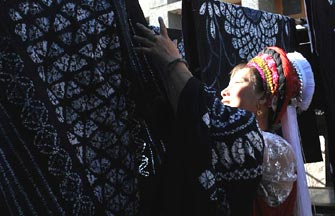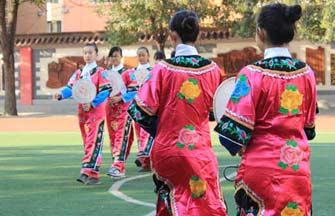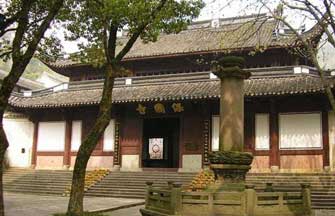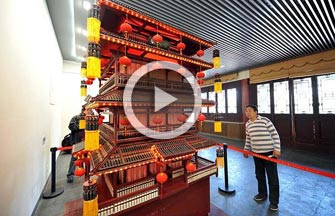Tie-dye technique inheritor passes down traditions
2013-12-14 10:35:21
 As a traditional folk technique of the Bai ethnic group, tie-dye was listed in 2006 into state-level intangible cultural heritages.
As a traditional folk technique of the Bai ethnic group, tie-dye was listed in 2006 into state-level intangible cultural heritages.
50,000-year-old ivory fossil unearthed in Shandong
2013-12-13 16:31:46
A 50,000-year-old ivory fossil was unearthed in a village in Linyi, Shandong province
An entity of identity
2013-12-12 10:28:47
 A group of ethnic Manchu people in Hohhot is doing all they can to preserve the culture.
A group of ethnic Manchu people in Hohhot is doing all they can to preserve the culture.
Landmark UNESCO statement aims to conserve World Cultural Landscapes
2013-12-11 16:01:45
Heritage and conservation experts have published the world's first statement of intent that specifically addresses the conservation of World Cultural Landscapes, improving their management while reducing the harm caused by poorly planned tourism and urban development.
Ancient dragon kiln unearthed in China
2013-12-11 15:49:28
Archaeologists have excavated a dragon kiln over 1,200 years old in Jingdezhen, once the center of China's ceramics industry, in the eastern province of Jiangxi.
Oldest wooden structure in southern China to be repaired
2013-12-10 16:50:24
 The main hall of the Baoguo Temple dates back to 1013 AD during the northern Song dynasty. Now the thousand-year-old temple is to undergo extensive renovations, in order to preserve it for another millennium.
The main hall of the Baoguo Temple dates back to 1013 AD during the northern Song dynasty. Now the thousand-year-old temple is to undergo extensive renovations, in order to preserve it for another millennium.
Palace Museum to add foreign relics hall
2013-12-10 09:40:07
China's Palace Museum, also known as the Forbidden City, is to renovate an unfinished Western-style "Hall of Water" into a hall for foreign cultural relics.
UNESCO adds 25 entries to intangible heritage list
2013-12-06 16:23:08
The United Nations Educational, Scientific and Cultural Organization announced Thursday that it has added 25 entries to the World Intangible Cultural Heritage list.
Kimchi-making culture added to UNESCO heritage list
2013-12-06 14:23:34
The South Korean government said Thursday that the registration of the tradition of making and sharing kimchi, the spicy fermented cabbage, to the UNESCO's list of intangible cultural heritages will contribute to the promotion and preservation of this culture.
Kimchi added to UNESCO list
2013-12-06 15:53:07
 UNESCO added South Korea's "Kimjang: Making and Sharing Kimchi" to its World Intangible Cultural Heritage list on December 5.
UNESCO added South Korea's "Kimjang: Making and Sharing Kimchi" to its World Intangible Cultural Heritage list on December 5.
Chinese Zhusuan listed as World Intangible Cultural Heritage
2013-12-06 15:00:05
 Zhusuan, the Chinese traditional method of calculations using the abacus, has been listed as a UNESCO World Intangible Cultural Heritage.
Zhusuan, the Chinese traditional method of calculations using the abacus, has been listed as a UNESCO World Intangible Cultural Heritage.
Abacus listed as intangible cultural heritage by UNESCO
2013-12-05 09:35:52
 The Zhusuan, or Chinese abacus was officially listed as an intangible cultural heritage at the 8th Annual UNESCO World Heritage Congress on December 4th in Baku, Azerbaijan.
The Zhusuan, or Chinese abacus was officially listed as an intangible cultural heritage at the 8th Annual UNESCO World Heritage Congress on December 4th in Baku, Azerbaijan.